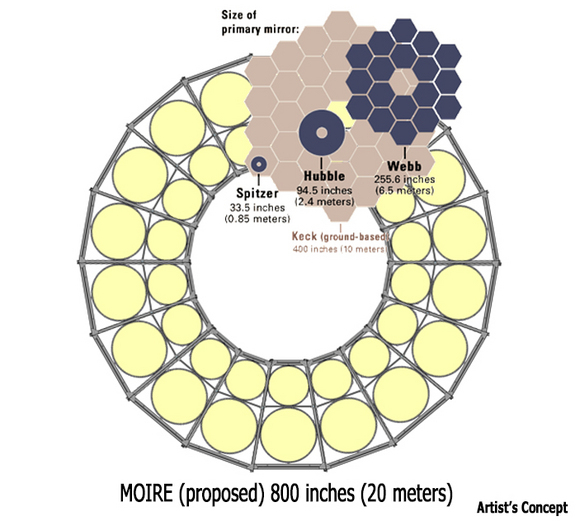It looks like you're using an Ad Blocker.
Please white-list or disable AboveTopSecret.com in your ad-blocking tool.
Thank you.
Some features of ATS will be disabled while you continue to use an ad-blocker.
An Alien View of Earth - How Alien Astronomers Would Know the Earth is Habitable - pt. 2 (Nitrogen)
page: 3share:
Keep in mind there are multiple factors about Planet Earth that support life, the absence of which would mean doom for all of us. Example: We have
an magnetic field around our planet that protects us from deadly radiation from the sun. Our Moon controls the tides that are so important to the
food chain. That is just two and as a Non-Scientist even I know there are others. These are And Gates (as opposed to Or Gates) in the schematic of
what it takes for life so they are all needed to sustain life as we know it. That is why being in the so-called Goldilocks zone is not necessarily
enough to ensure life, and especially civilizations on other planets.
Hate to throw a wet blanket on this search for life in the Universe but life is a very very complicated thing and when you consider all of the things that have to go right it is truly a miracle we are here.
Hate to throw a wet blanket on this search for life in the Universe but life is a very very complicated thing and when you consider all of the things that have to go right it is truly a miracle we are here.
a reply to: Blue Shift
Forgive me Jadestar for going slightly off topic, but might not be.
SETI has the correct assumptions for searching for alien civilizations. As the final letter in SETI is inteligence is makes the assumption of a technically advanced civilization. As for the assumption that the aliens would be like us is quite logical also. Because back to Jadestar. And also for your answer.
For aliens to search for inhabitable planets you must make a few simple assumptions. A. They must have inteligence (ie a brain) to make a reasoning that there could be another species or world other than them. B. They must have vision (eyes) to see beyond their planet to know that there is other planets. C. They must be dexterous (maybe fingers or somesuch appendages) to build the said search devices. D. They must be mobile as the reasoning behind trying to find habitable worlds is to sooner or later move to those worlds.
So finally saying I see no reason that aliens wouldn't be similar to us.
Forgive me Jadestar for going slightly off topic, but might not be.
SETI has the correct assumptions for searching for alien civilizations. As the final letter in SETI is inteligence is makes the assumption of a technically advanced civilization. As for the assumption that the aliens would be like us is quite logical also. Because back to Jadestar. And also for your answer.
For aliens to search for inhabitable planets you must make a few simple assumptions. A. They must have inteligence (ie a brain) to make a reasoning that there could be another species or world other than them. B. They must have vision (eyes) to see beyond their planet to know that there is other planets. C. They must be dexterous (maybe fingers or somesuch appendages) to build the said search devices. D. They must be mobile as the reasoning behind trying to find habitable worlds is to sooner or later move to those worlds.
So finally saying I see no reason that aliens wouldn't be similar to us.
edit on 11-9-2015 by crayzeed because: (no reason given)
originally posted by: icewater
Keep in mind there are multiple factors about Planet Earth that support life, the absence of which would mean doom for all of us. Example: We have an magnetic field around our planet that protects us from deadly radiation from the sun.
True however we expect most planets the size of Earth to have a magnetic field. It may also be possible that life could adapt to an increasingly weak magnetic field if that happened on a geologic (million/billion year) time scale. So a magnetic field may not be as important as we think.
Again, we can not be too Earth-centric in our limitations on what life can do on other worlds.
Our Moon controls the tides that are so important to the food chain.
Tidal pools are one area which could have helped life start on the Early Earth.
But...our sun also causes tides.
Even Venus and Jupiter have tidal effects on Earth - NASA
So we'd have tides even if we had no moon.
The moon's biggest benefit is that it stabilizes the Earth from flipping over and it stabilizes our climate as a result but recent research also shows a large moon may not be necessary for life at all.
SEE: Alien Planets May Not Need Big Moons to Support Life - Space.com
That is just two and as a Non-Scientist even I know there are others. These are And Gates (as opposed to Or Gates) in the schematic of what it takes for life so they are all needed to sustain life as we know it. That is why being in the so-called Goldilocks zone is not necessarily enough to ensure life, and especially civilizations on other planets.
We don't know yet. It's like at one time binary stars were thought to be devoid of planets and we found out we were wrong, we've found planets which orbit both stars in binaries and planets which orbit each star in a binary or multiple star system.
Hate to throw a wet blanket on this search for life in the Universe but life is a very very complicated thing and when you consider all of the things that have to go right it is truly a miracle we are here.
You are right that it is a very complicated thing. Something tells me you will appreciate the following graphic:

originally posted by: crayzeed
a reply to: Blue Shift
Forgive me Jadestar for going slightly off topic, but might not be.
It's ok, conversation is what this thread is for.
SETI has the correct assumptions for searching for alien civilizations. As the final letter in SETI is inteligence is makes the assumption of a technically advanced civilization. As for the assumption that the aliens would be like us is quite logical also. Because back to Jadestar. And also for your answer.
The thing is, Intelligence might manifest in different ways. We don't know that it would be immediately recognizable either.
There are types of intelligence on earth, very alien to us. ie: the distributed intelligence of an ant hill.
So the search for extra terrestrial intelligence also embraces learning about other forms of intelligence on Earth such as distributed intelligence and has done work in interspecies communication with primates and cetaceans.
For aliens to search for inhabitable planets you must make a few simple assumptions. A. They must have inteligence (ie a brain) to make a reasoning that there could be another species or world other than them. B. They must have vision (eyes) to see beyond their planet to know that there is other planets. C. They must be dexterous (maybe fingers or somesuch appendages) to build the said search devices. D. They must be mobile as the reasoning behind trying to find habitable worlds is to sooner or later move to those worlds.
All good assumptions to make however.
B. need not be eyes like ours. they could very well be infrared eyes, or even radio eyes.
D. Is probably the weakest assumption. Even if we had no space program we'd still be interested in exoplanets. I can imagine a species with no intent to travel anywhere in space which is just curious about any potential neighbors. We had no space program when Galileo looked through his telescope and saw the moons of Jupiter for instance.
So finally saying I see no reason that aliens wouldn't be similar to us.
I suspect we'd be similar in those basic ways but vastly different in other ways.
originally posted by: Thecakeisalie
a reply to: JadeStar
Fantastic work again Jade, par for the course.
Hopefully in the future indirect observation can be a thing of the past.
Thank you, and that's the plan.
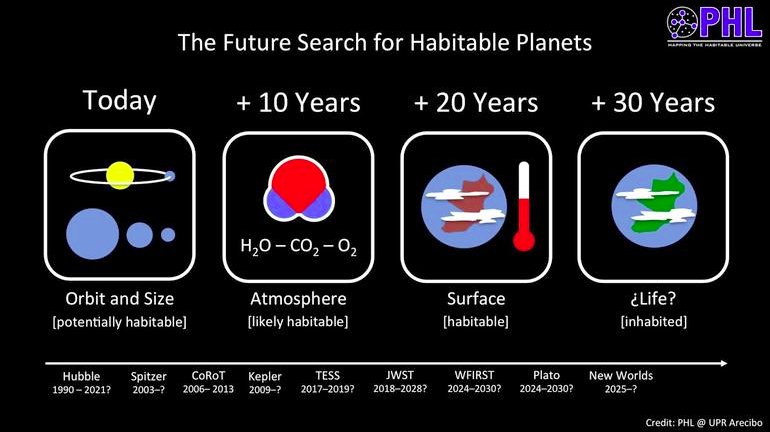
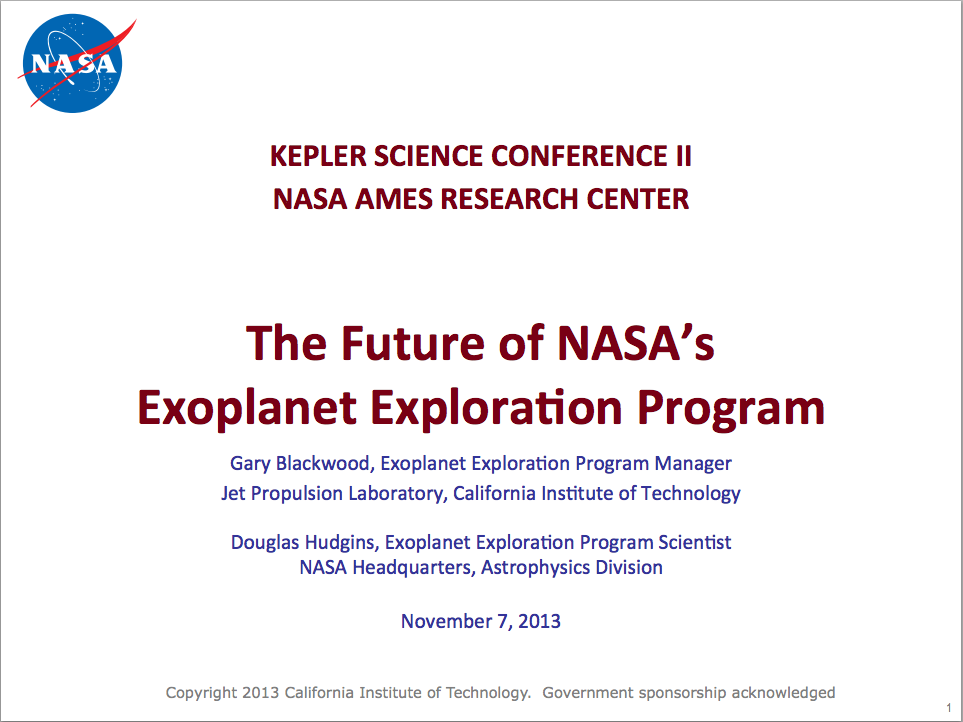
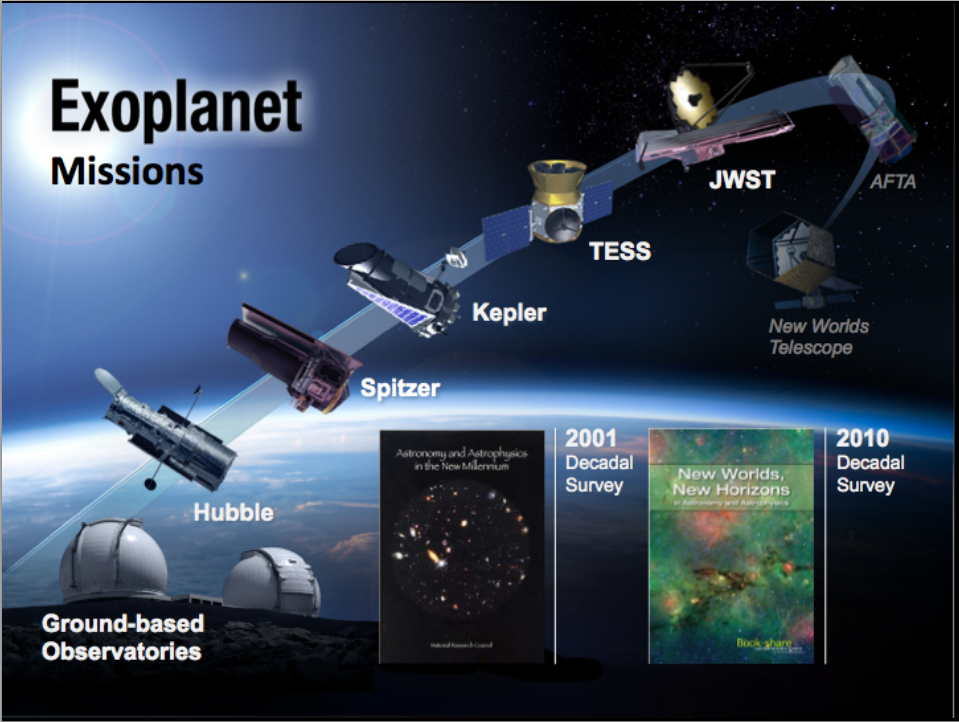
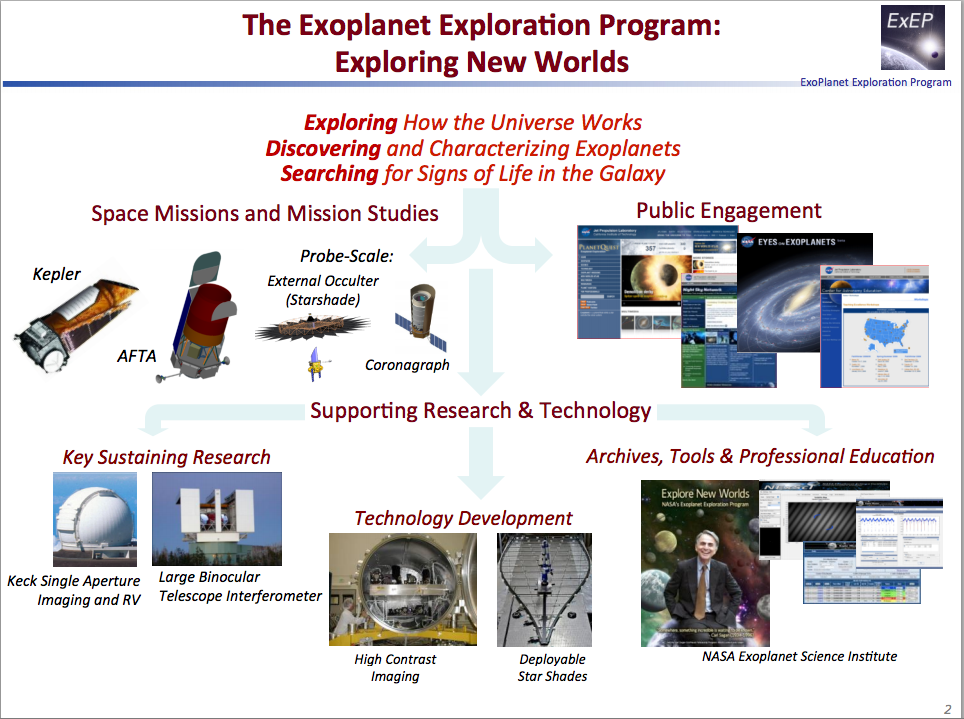
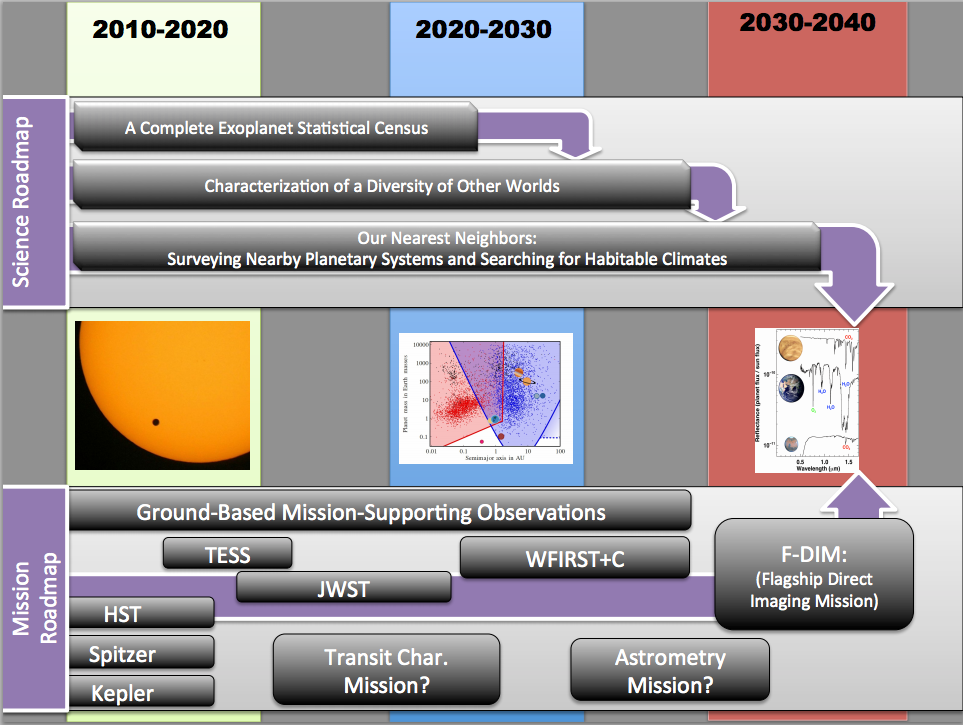
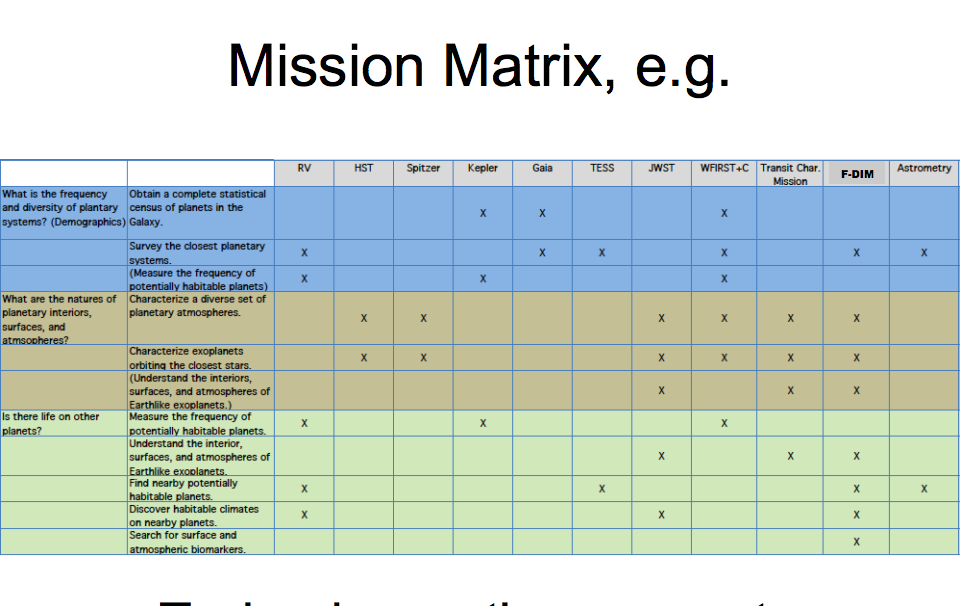
These will be closely examined in the near future:
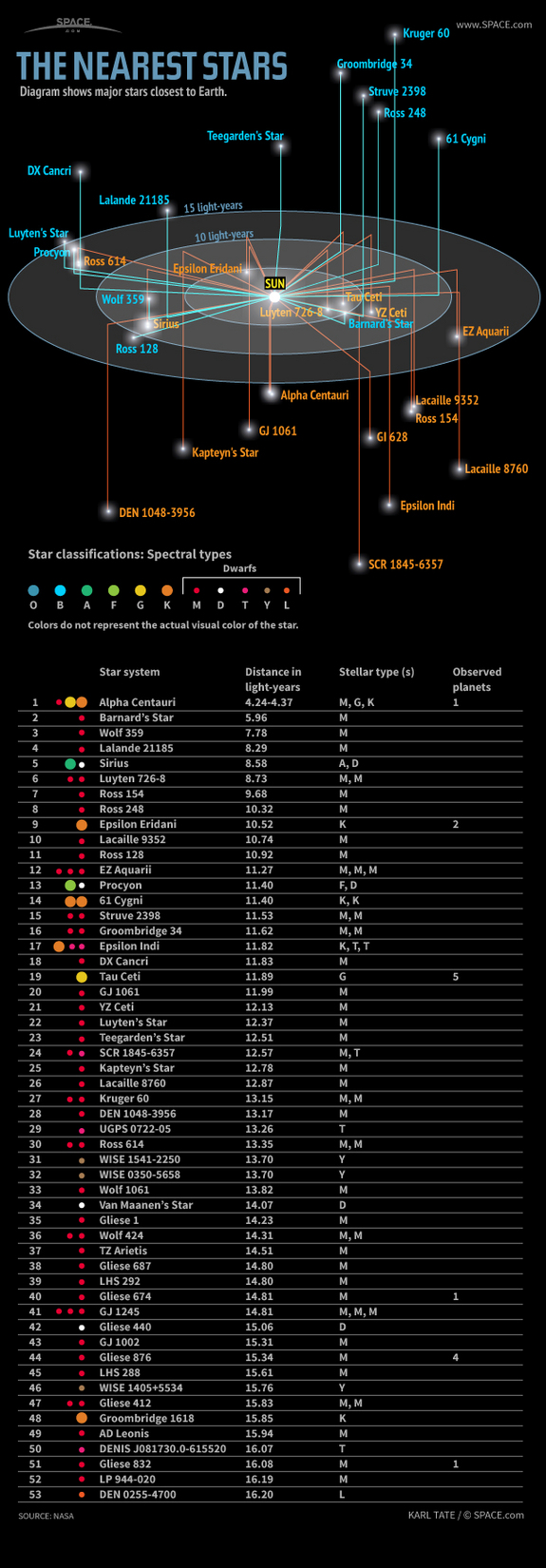
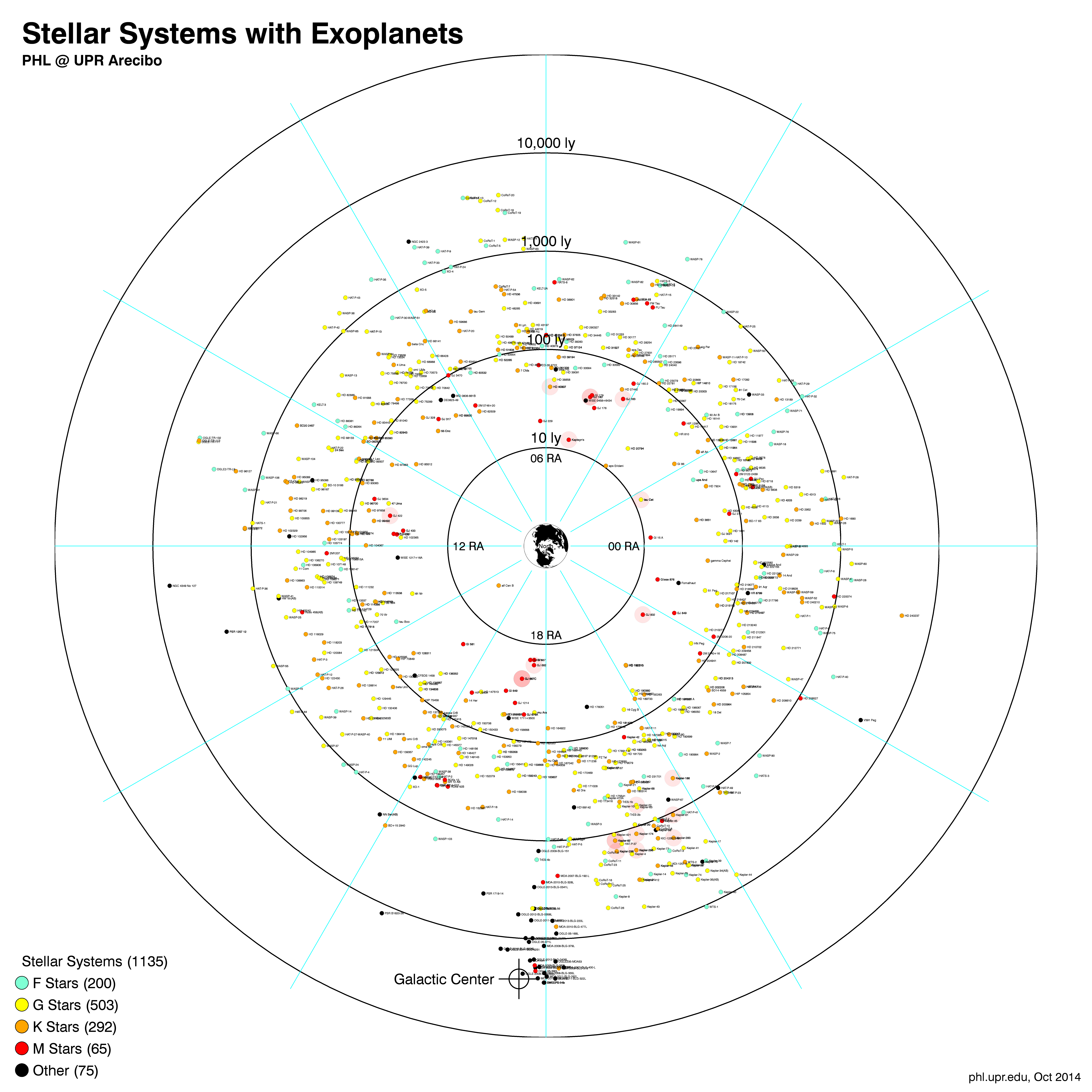
These will be some of the tools on the ground:

This is what we hope to achieve:
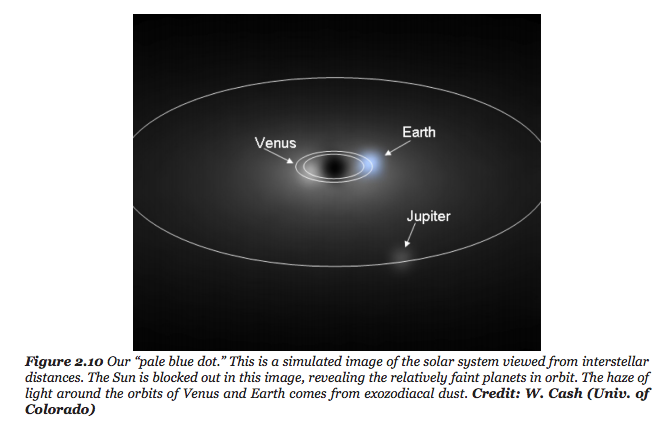
Resulting in this:
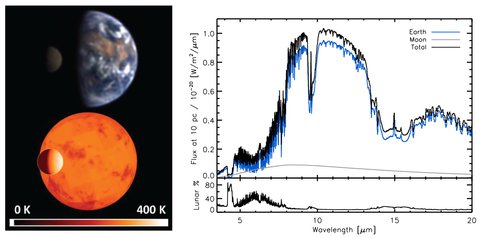
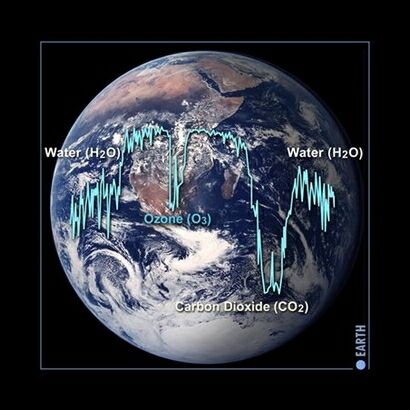
So it's important to know NASA is pushing much of this forward.
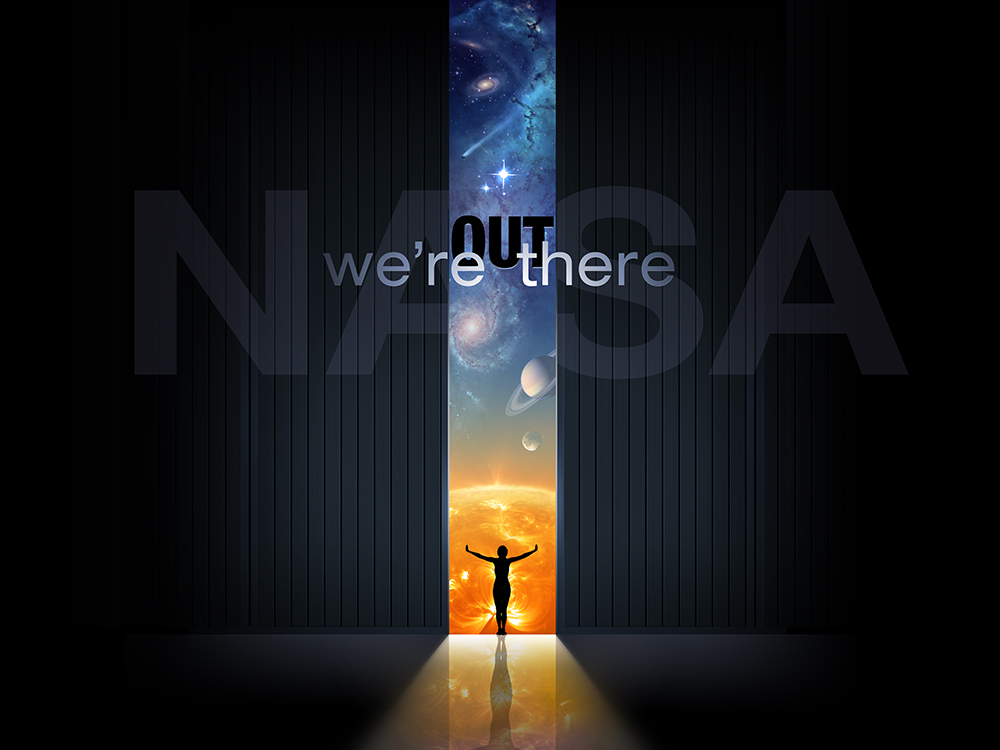
edit on 12-9-2015 by JadeStar because: (no reason given)
originally posted by: JadeStar
Oops. I forgot to mention.. Here was Pt.1 which I wrote last year. That covered Oxygen and Methane -An Alien View of Earth - How Alien Astronomers Would Know the Earth is Habitable
I guess part 3 would be to determine by the nature of the gasses what level of life is on the planet and whether there was any technological advance life too..
BTW there are only 512 G stars within 100 light years of earth, so far only 5% are known to have planets, and I do not expect that percent to double, but even at 10% that is 50 stars with planets. That makes us wonder how many of those planets could be earth like to allow life a chance to advance past simple life forms, and not be like Venus or Mars that are close but not close enough?
Then with earth making one species able to look at the stars within 4.5 billion years what is the rarity of life to not only develop with intelligence to do this but also be physically able to do it? I think unless we are extremely lucky we are very alone in our neck of the woods....
edit on 12-9-2015 by Xtrozero because: (no reason given)
Very detailed and intuitive post to say the least.
I have enjoyed your post over the years and continue to do so.
Your writing style is unique and vivid.
S&F
I have enjoyed your post over the years and continue to do so.
Your writing style is unique and vivid.
S&F
originally posted by: Xtrozero
originally posted by: JadeStar
Oops. I forgot to mention.. Here was Pt.1 which I wrote last year. That covered Oxygen and Methane -An Alien View of Earth - How Alien Astronomers Would Know the Earth is Habitable
I guess part 3 would be to determine by the nature of the gasses what level of life is on the planet and whether there was any technological advance life too..
Yes. Also things like Ocean Glint.
BTW there are only 512 G stars within 100 light years of earth, so far only 5% are known to have planets, and I do not expect that percent to double,
I expect that percent to not only double but probably end up somewhere around 90% or higher. We know that there is nothing special about the planet formation process.
Planets are formed as a byproduct of star formation. See a star? It probably has planets.
We have not really studied the stars in our backyard, that 100 light year sphere in with the level of sensitivity and detail needed to find a lot of their planets but we soon will.
So, 512 G stars in our backyard? I'd suspect at least 480 planetary systems (accounting for binaries). Once we actually really start looking for them in detail we will probably find lots of interesting places in our backyard. That starts with NASA's TESS (Transiting Exoplanet Survery Satellite) mission in 2017. Think of it as both a Kepler for our backyard and a finder scope for the James Webb Space Telescope which will launch the next year.
You can bet most of the nearby stars just as most of all stars have planetary systems of some kind.
Planets were once thought to be rare but they are the rule now. Finding a single G star (or any other type of star) *without* planets these days would be rare.
It should be noted that different planet hunting techniques have pros and cons.
Finding planets through the transit method which Kepler uses requires a planet to actually transit the star between the star and us. This has like a 5% chance of happening. Therefore if we only relied on this technique to examine nearby stars we'd miss potentially 95% of the planets.
The radial velocity technique requires years of studying a star both to ensure that what is being detected is actually a planet and not the stars behavior which can often mimic one and because it requires the planet to make several full orbits (For our Earth/Sun our alien astronomer would have to study it for 730 earth days) and its only recently the planets of a small size became detectable with it.
Direct imaging allows us to see the planet, its orbit and measuring its reflected light allows us to determine a lot about its composition. But direct imaging an Earth sized planet around a Sunlike star it like trying to spot a firefly next to a searchlight. You have to block out the star and techniques and instrumentation to do this for this purpose are cutting edge.
So one with the most pros and least cons, is direct imaging, which we've not yet been able to do with small planets around nearby stars, though we do have some direct images of young gas giants. But the huge ground based telescopes (and spectrographs) being constructed by Europe and the US which will be in operation by 2025 will be able to do this.
And a starshade mission is heavily favored by the exoplanet community and could be flown by NASA in the late 2020s.
but even at 10% that is 50 stars with planets. That makes us wonder how many of those planets could be earth like to allow life a chance to advance past simple life forms, and not be like Venus or Mars that are close but not close enough?
As I said, there will be almost 10 times that amount.
Also don't sleep on K-Stars.
While we humans live on a planet around a G-Star as does our fictional alien astronomer they (and us in the new future) looking at the kind of stars we might expect to find life around might conclude that our Sun probably wouldn’t top a list of such stars as compiled by the average extraterrestrial astronomer:
Astronomer Jean-Mathias Grießmeier (ASTRON, The Netherlands)
“The Sun does not seem like the perfect star for a system where life might arise. Although it is hard to argue with the Sun’s ‘success’ as it so far is the only star known to host a planet with life, our studies indicate that the ideal stars to support planets suitable for life for tens of billions of years may be a smaller slower burning ‘orange dwarf’ with a longer lifetime than the Sun ― about 20-40 billion years. These stars, also called K stars, are stable stars with a habitable zone that remains in the same place for tens of billions of years. They are 10 times more numerous than the Sun, and may provide the best potential habitat for life in the long run.”
So K-Stars may actually be the "sweet spot" in terms of stars likely to host interesting planets with life. Add them to the mix and now you have around 950 more stars to the 512 G-stars in that 100 light year sphere.
I've also not talked about the ongoing debate about habitable planets around red dwarfs. Suffice to say that there will be plenty of places we look for life, not all of them will be around stars like our Sun.
Then with earth making one species able to look at the stars within 4.5 billion years what is the rarity of life to not only develop with intelligence to do this but also be physically able to do it? I think unless we are extremely lucky we are very alone in our neck of the woods….
We don't know, it's too soon to say with any degree of certaintity how likely we are to have neighbors. We could be very alone in that 100 light year sphere or virtually surrounded or anything in between. We just don't know yet.
But finding that out will be one of the greatest scientific journeys of discovery ever known.
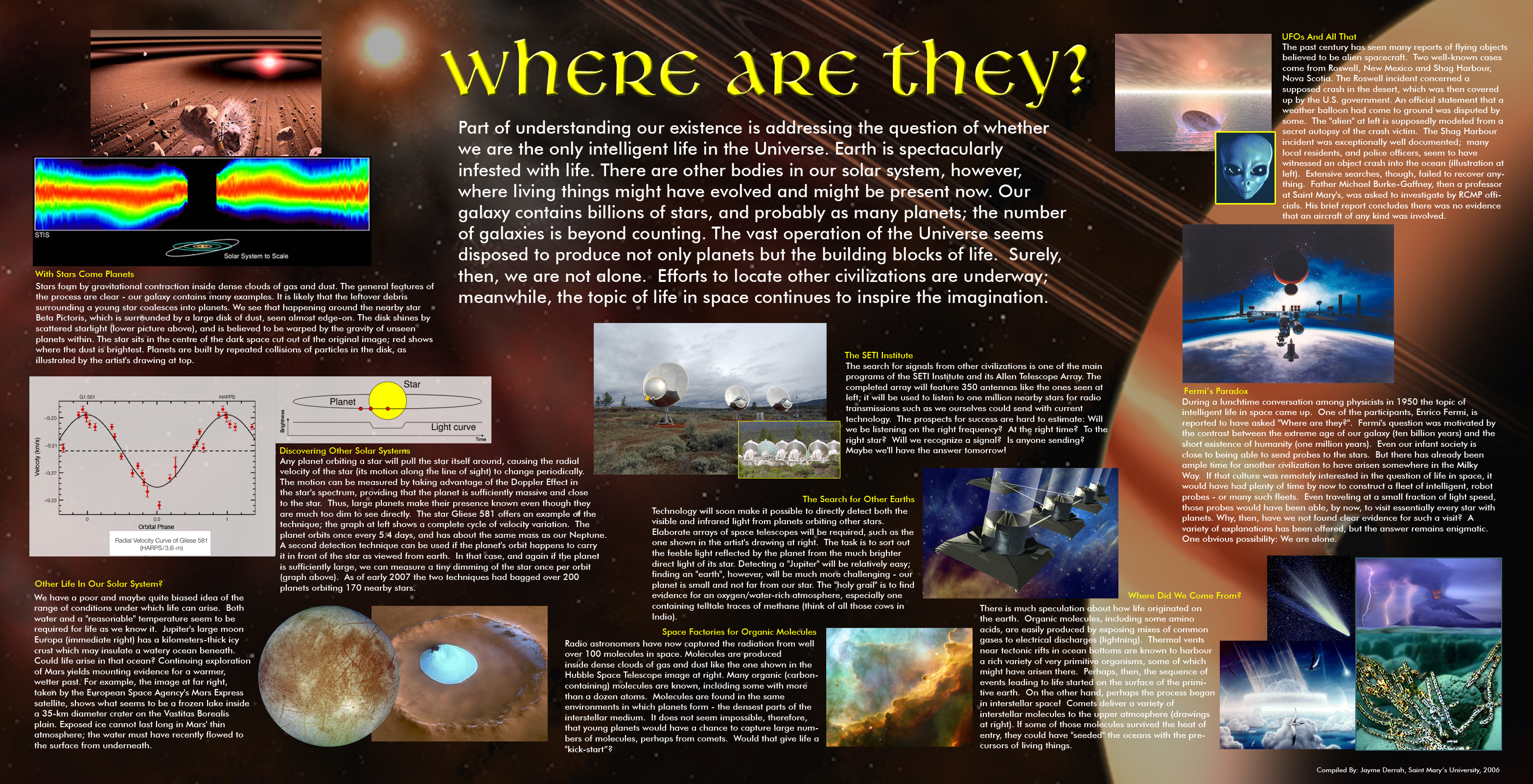
edit on 12-9-2015 by JadeStar because: (no reason given)
edit on 12-9-2015 by JadeStar because: (no
reason given)
originally posted by: stormbringer1701
stick this tricorder in the ir optics area: phys.org...
More like "stick the spectrograph in your consumer electronics area."
That actually uses the same technique known as spectroscopy which has been used in astronomy to determine the composition of objects light years away for 100 years.
So that is actually a spin-off product based on something developed for astronomy originally.
edit on 12-9-2015 by JadeStar because: (no reason given)
yeah bu did you see all the stuff it can suss out? one presumes that with enough light gathered you could do much of this through a telescope too. i mean "this pill has acetyl silly salicyi blah blah blah 3 in it!" poke a probe at a planet.
originally posted by: JadeStar
originally posted by: stormbringer1701
stick this tricorder in the ir optics area: phys.org...
More like "stick the spectrograph in your consumer electronics area."
That actually uses the same technique known as spectroscopy which has been used in astronomy to determine the composition of objects light years away for 100 years.
So that is actually a spin-off product based on something developed for astronomy originally.
i mean the level of detail. i do know itwas developed largely in astronomy and chem labs first. but the thing is the detail.
edit on 12-9-2015
by stormbringer1701 because: (no reason given)
originally posted by: stormbringer1701
yeah bu did you see all the stuff it can suss out? one presumes that with enough light gathered you could do much of this through a telescope too. i mean "this pill has acetyl silly salicyi blah blah blah 3 in it!" poke a probe at a planet.
originally posted by: JadeStar
originally posted by: stormbringer1701
stick this tricorder in the ir optics area: phys.org...
More like "stick the spectrograph in your consumer electronics area."
That actually uses the same technique known as spectroscopy which has been used in astronomy to determine the composition of objects light years away for 100 years.
So that is actually a spin-off product based on something developed for astronomy originally.
i mean the level of detail. i do know itwas developed largely in astronomy and chem labs first. but the thing is the detail.
The level of detail is a function of of the amount of light gathered. Want to do that? Build a bigger telescope.
Here we have a small device which is using and gathering a LOT of light photons from the object because it has its own laser.
The spectrographs in use today and the ones to come in the near future on telescopes are a couple of orders of magnitude better than what is inside that device but they are limited by the amount of light gathered from the distant object.
Instead of a handy laser, we have to rely on reflected light from the star the planet orbits (after blocking out the star in order to see the planet in the first place).
So, in order to do that with the same level of detail with planets you need much larger light buckets (optics), larger than even the largest telescopes under construction or a space based interferometer made up of like hundreds of Hubble Sized telescopes to gather the equivalent amount of reflected starlight.
The alternative would be building a solar system sized laser to shoot at exoplanets, mimicing what this small device does. Of course that would be impractical and could potentially get us into trouble
edit on 12-9-2015 by JadeStar because: (no reason given)
i saw an article a while back about a glitter based telescope where millions or billions of tiny mirrors would be spread out in a cloud in space and
though each mirror was tiny the total effective area would the thousands and thousands of kilometers. I mean beyond the actual total reflective area
of the individual pieces added together too.
separately i have seen things about single photon amplification technology too. not directly related to astronomy but i think it could be applied to it as well.
separately i have seen things about single photon amplification technology too. not directly related to astronomy but i think it could be applied to it as well.
originally posted by: stormbringer1701
i saw an article a while back about a glitter based telescope where millions or billions of tiny mirrors would be spread out in a cloud in space and though each mirror was tiny the total effective area would the thousands and thousands of kilometers. I mean beyond the actual total reflective area of the individual pieces added together too.
Yes. This one: Glitter Cloud May Serve as Space Mirror - NASA/JPL
I think that technology is going ultimately replace rigid mirror designs for space telescopes but it is in its infancy. Still I am really interested in it.
Maybe because I just like glitter.
separately i have seen things about single photon amplification technology too. not directly related to astronomy but i think it could be applied to it as well.
Photomultipliers are already in use, in optical SETI research.
edit on 12-9-2015 by JadeStar because: (no reason given)
maybe they can see something like this...can you believe it? we are taking movies of alien planets now.
say hello to beta pictoris b!
phys.org...
of course that planet is huge but still it has several pixels up and down.
say hello to beta pictoris b!
phys.org...
of course that planet is huge but still it has several pixels up and down.
new topics
-
Man Stabbed or Cardiac arrest on Westminster Bridge, London, UK
Mainstream News: 51 minutes ago -
A fix for the Trans players in sports
Social Issues and Civil Unrest: 2 hours ago -
Petition Calling for General Election at 564,016 and rising Fast
Political Issues: 5 hours ago
top topics
-
Petition Calling for General Election at 564,016 and rising Fast
Political Issues: 5 hours ago, 11 flags -
France gives Ukraine license to fire long-range missiles at Russia
World War Three: 17 hours ago, 9 flags -
Rep. Alexandria O. Cortez Says Forcing People to Use The Correct Bathroom is Dangerous.
US Political Madness: 12 hours ago, 7 flags -
Ok this is some BS now WTH
Rant: 14 hours ago, 5 flags -
A fix for the Trans players in sports
Social Issues and Civil Unrest: 2 hours ago, 5 flags -
Cooperation zones
World War Three: 13 hours ago, 4 flags -
Man Stabbed or Cardiac arrest on Westminster Bridge, London, UK
Mainstream News: 51 minutes ago, 0 flags
active topics
-
Cooperation zones
World War Three • 16 • : KnowItAllKnowNothin -
Man Stabbed or Cardiac arrest on Westminster Bridge, London, UK
Mainstream News • 1 • : theatreboy -
France gives Ukraine license to fire long-range missiles at Russia
World War Three • 28 • : Imhere -
Results of the use of the Oreshnik missile system in Dnepropetrovsk
World War Three • 185 • : bastion -
Petition Calling for General Election at 564,016 and rising Fast
Political Issues • 30 • : Cymru -
International Criminal Court Issues Arrest Warrant For Netanyahu
Mainstream News • 46 • : JJproductions -
-@TH3WH17ERABB17- -Q- ---TIME TO SHOW THE WORLD--- -Part- --44--
Dissecting Disinformation • 3367 • : Thoughtful3 -
Rep. Alexandria O. Cortez Says Forcing People to Use The Correct Bathroom is Dangerous.
US Political Madness • 28 • : WeMustCare -
Ok this is some BS now WTH
Rant • 10 • : awhispersecho -
A fix for the Trans players in sports
Social Issues and Civil Unrest • 9 • : Xtrozero

